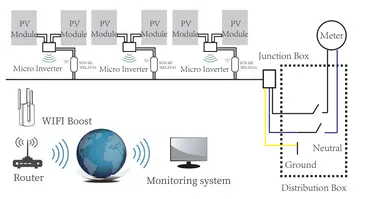Picking solar can be problematic, you have the costs to consider and what value you get from the installation and of course how long it takes to pay for itself and then actually begin to save you money.
There is no doubt that for big savings you need to have a battery system, but even with a battery system you do not need to have solar panels to make savings. but you do need to export power and get paid at a good rate. In this article we are looking at the most cost effective way to have solar.
What I will share is the two options which offer the best bang for buck, but its not that easy to define what people will install or can install and how we can match the systems to the person. Lets get the higher cost items out of the way first and this will be the battery system.
Higher cost – good value?
The battery system comes into play where you have a cheap rate time from your energy supplier. This means that you can charge up your battery when it costs the least and use it over night and at peak rates.
if we start small battery system with our 5.1kWh battery.
We will use the rates £0.07 low and £0.23 Standard.
This means that between the two you save £0.16 per kWh or £0.60 per battery cycle.
The battery is currently priced at £750, meaning that to make that money back, you would have to carry out 1250 cycles.
If you cycle the battery once per day, that means the battery wont pay you back for 3.42 years.
In the longer term you can expect to save £2,685.
The catch here is that you will need to buy an inverter that will charge the battery and supply the home, this is around £650.00.
When it comes to value, if you scale up a battery system you can then add profit/savings where your battery size is larger than your use and you are selling power at peak rate.
Lets move to a larger battery
Our 40kWh Battery has much larger price tag of £7,200
You would save £6.40 per cycle. Meaning that you could need to carry out 1,125 cycles to recover the costs.
If we work on the basis that you use 20kwh and sell 20kwh (£0.15kwh), you would need to Have 1161.29 cycles or 3.18 years.
in the longer term you could expect to save £15,330
Low Budget Solar Installations.
We have seen what the difference a battery can make to your savings, but grid tied does not offer a battery, Therefore you can only save what you can use. While you can be paid for export, it will be short term and not benefit for higher payment rates. usually around £0.04.
Micro solar and small string inverters offer a smaller solar installation which allows you to make solar power within a smaller budget, the savings are not great and the real “value” is the initial costs.
Grid tied should be a small system and low cost that meets the general needs with the emphasis on not exporting power. Most home day time loads are around 300watts. But we would possibly want to off-set.
Off-Setting power takes some effort to achieve as you will want to schedule washing machines and energy devices to work during peak solar production. There is only so much that works as a advantage over cost, but in the same you can scale back and off set.
lets say you have a 1000w solar installation but you have a 2kw washing machine.
When solar is at peak, you will have 50% off-set. rather than paying £0.23kwh that’s now going to cost £0.12.
You also should take into account that a machine will use a larger amount of power in certain functions, and lower for the remainder. within standing a cycle of 45 minutes of the hour.
it is worth looking at your home load during the weekend where everyone is at home doing what they do.
This would be the main target of the size of solar that you would need.
Lets run some numbers here so we can see what you could save.
Micro inverter and two panels will cost around £350. we will give you a peak solar of 800w
Your daily load is 350w.

We can see in this chart that we reach 300 watt around 8 am, then we are above this until 3pm.
This mean our saving is 2.1kwh or £0.48.
You can see that we exported more power to the total of 2.4kwh (£0.09)
just looking at the base savings, it would require 729 days to pay back the cost of the system.
if we use more power for example 500w (3.5kwh) this is reduced to 437 days.(1.19 years)
The longer term value of the system could save £2,213.75
Hopefully we can now see how a value system can be expensive and a lower cost system can offer better value. One of the hardest parts from a supplier and consultant is where the value comes from an upgrade path. Micro inverters can be the worst value, and the better value would be a hybrid that will work without a battery. But if your on a budget this can be more than triple the initial costs.
The long terms savings mentioned here are based on 10 years, most items should last ten years or more, but it makes the math more accurate. Where you will find your “value point” in this information is more a personal choice or budget or it could be down to space. The focus tends to be on ROI durations being shorter but that does not meet a good value point. just look at the bigger battery compared to the micro inverter system and the long term savings.

No responses yet